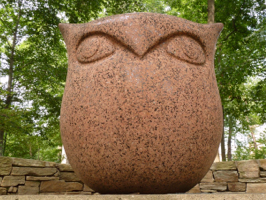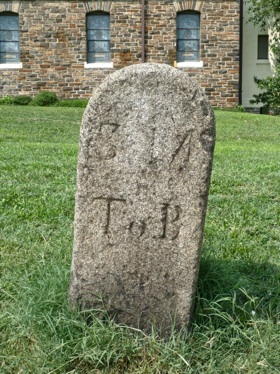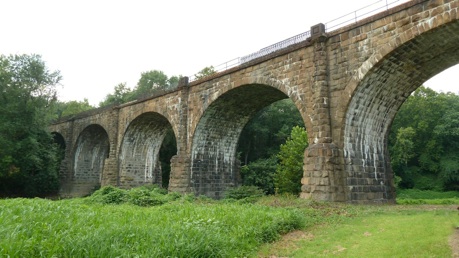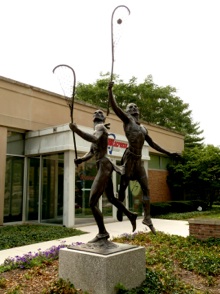
Ever wonder what the first major highway was in the United States?
Roads among the major eastern cities had developed over the early decades of the U.S. but that network didn’t allow for easy expansion west to settle the new territories. Travelers could go as far west as Cumberland by navigating the Potomac River but from there travel got tough.

In 1811 the federal government commissioned the construction of a National Road to connect Cumberland to Pittsburgh and points west. Then, in 1824 a turnpike was constructed which connected Baltimore with Cumberland and was called the National Pike or the eastern extension of the National Road.
190 years after construction began you can still find many mile markers in place indicating distance to Baltimore (e.g. “3 M To B”). Not all are original but even the newest are many decades old. The idea that still today you can find evidence of the National Pike built at the dawn of our country’s history really intrigued me. I was going to hunt them down and take pictures of those which stood out as notable.
My plan was to drive 125 miles of it starting in Cumberland and heading east to Mile Zero in Baltimore. With the help of my navigation system I’d stay as much as possible on the old road and with the aid of my odometer I’d find as many of the evenly-spaced milestones as I could. Where a marker caught my eye and was easily accessible I’d take a picture. That’s what I did and a sample of the mile markers can be seen below. This site was my inspiration.

Along the way I stumbled into some interesting distractions. In Ellicott City I found the oldest railway station, the original terminus for the first railroad in the country: the B&O Railroad. It now serves as the B&O Railway Museum. Nearby I found the amazing Thomas Viaduct stone arch bridge which was a part of the original B&O line and which is still in use today carrying 60-80 trains per day.

Once in Baltimore I was free to wander before heading home. In this town there’s no shortage of things to see so I narrowed my focus to Johns Hopkins University and Mount Vernon Place.

At the former I walked the grounds, visited the library, and strolled the Bufano Sculpture Garden. I also tried to visit the U.S. Lacrosse Museum but it was closed. At the latter I was floored by what I found: the original Washington Monument, the Peabody Library, and many other cultural icons. I need to get back there!
On my way home I knew there wouldn’t be much open. It was after 5:00 on a Saturday but I could at least swing by a few places and scope the out. I chose a few institutions along the 295 between Baltimore and Washington. The National Electronic Museum seemed to deal with pre-digital electronic technology and is probably worth revisiting. Certainly the National Cryptologic Museum of the NSA and the NASA Goddard Space Center are worth returning two and both are less than an hour from home.
All I just wanted to do when I finally got home was to sit still and zone out!